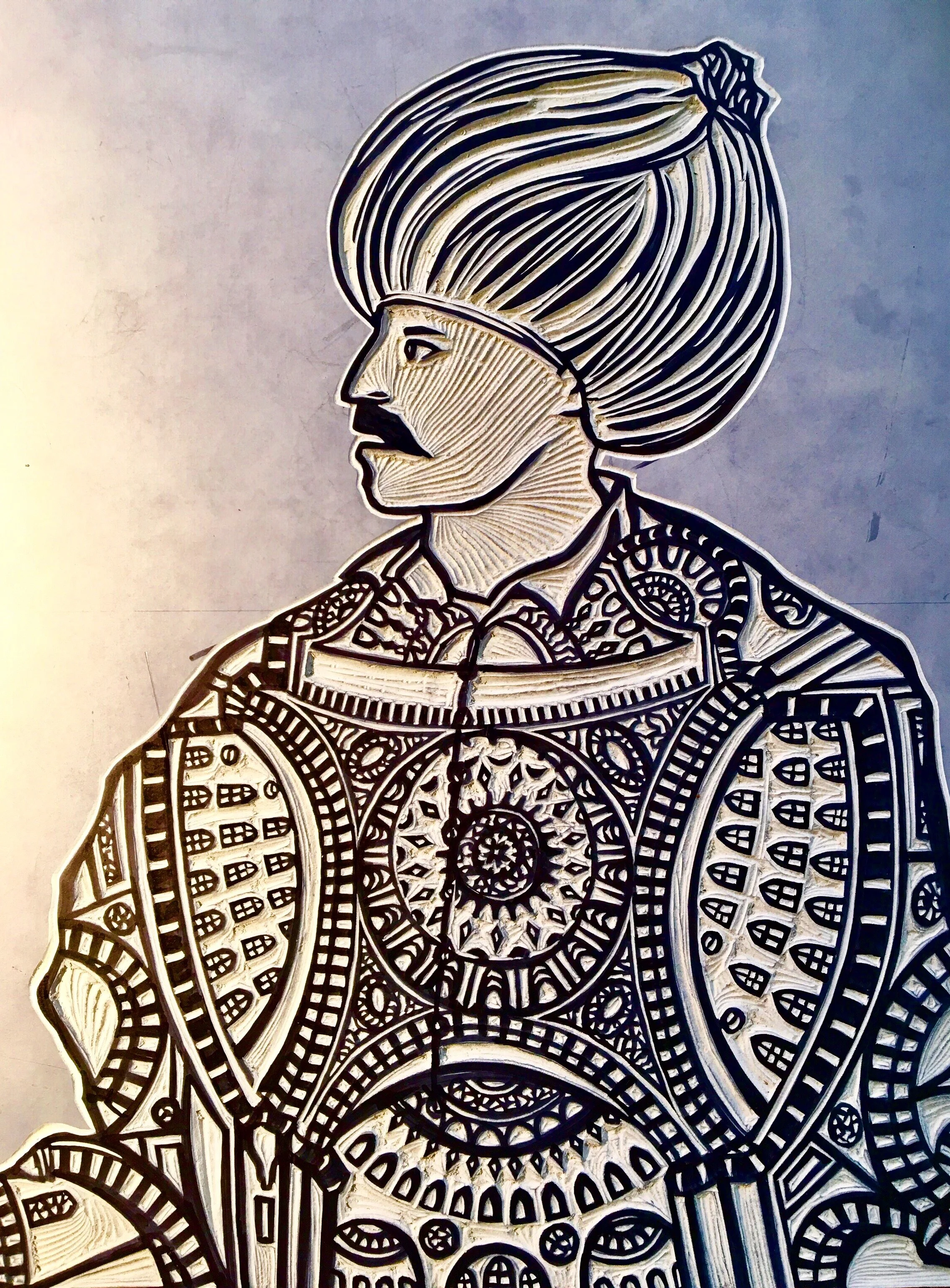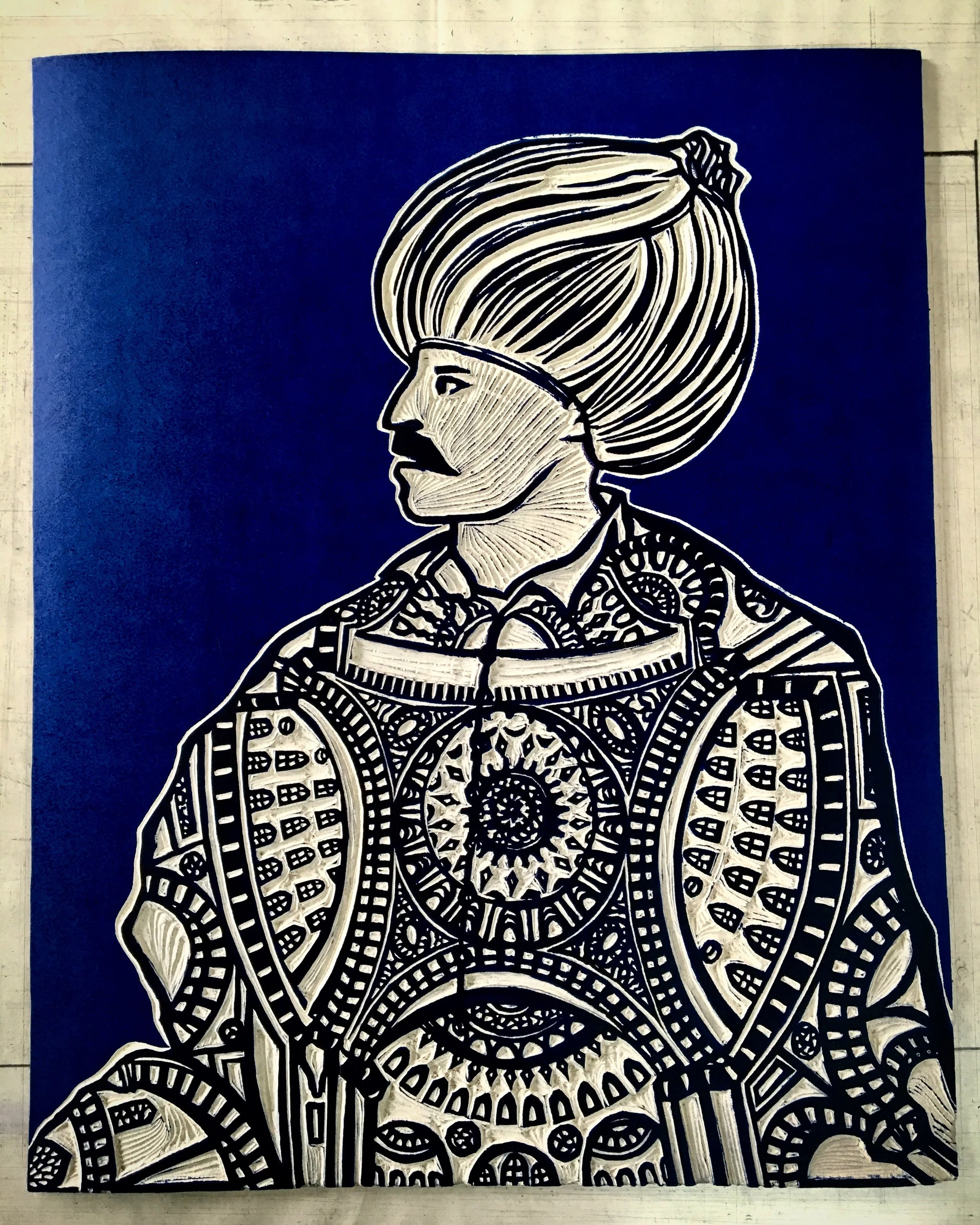





















Sultan Süleyman the Magnificent presided over a Golden Age of Ottoman architectural and cultural innovation during the sixteenth-century, after which, a veritable blanket of decline is generally perceived to have enveloped the empire.
I wanted to paint a narrative capturing elements of imperial splendour alongside hints of decay, and juxtaposed Byzantine ruins with their Ottoman architectural counterparts at their zenith.
In my imagination, sufi mystics usher along the passage of time and the inevitable deterioration of grandeur, while delicate boats mark the constant movement and trade characterizing the waterways surrounding Istanbul.

I have been fascinated by female patronage of Ottoman structures, particularly of the 16th-Century. In a time where women were not allowed to be seen in public, the most effective way for a woman of means to project a benevolent persona was through the patronage of public works, from aqueduct repairs to mosque complexes, encompassing schools, marketplaces and hospitals.
While recent scholarship has unearthed much more detail in these narratives, the veiled woman hidden from view, but at the forefront of building projects still captivates my imagination.

The Süleymaniye mosque in Istanbul, commissioned by and dedicated to Sultan Süleyman, was the crowning glory of imperial architect Sinan's career at the time.* Adorned with myriad remnants taken from Roman and Byzantine structures, this mosque was constructed to embody the power of the Ottoman state at the pinnacle of its global might .
I have been in love with the ceiling in the Süleymaniye for years, and sought to bring a portrait of the sultan to life using the dome interior of his grand mosque to exemplify the visual resplendence he presided over.
Each print in this series has been customized and hand-finished.
*Until Sinan constructed the Selimiye mosque in Edirne.

Inspiration for this print was mostly derived from the ruins I was lucky enough to admire in the ancient Achaemenid capital of Persepolis. I combined elements from the wall reliefs of the city to create a narrative within and around a Zoroastrian tower of silence, from vassals bringing tribute to King Darius, to a lion devouring a bull for Norouz, the Persian New Year, symbolising the shift from winter to spring.